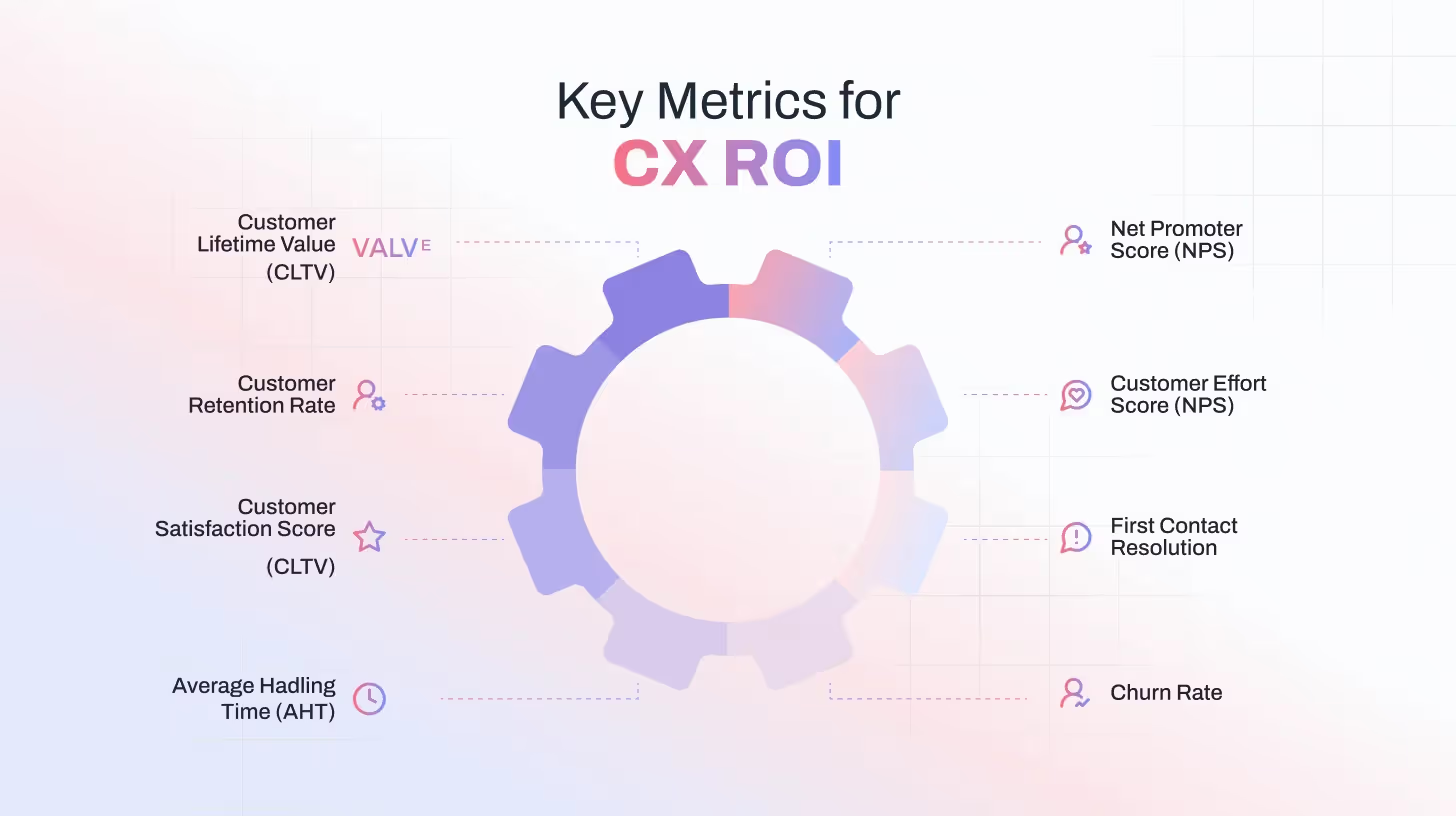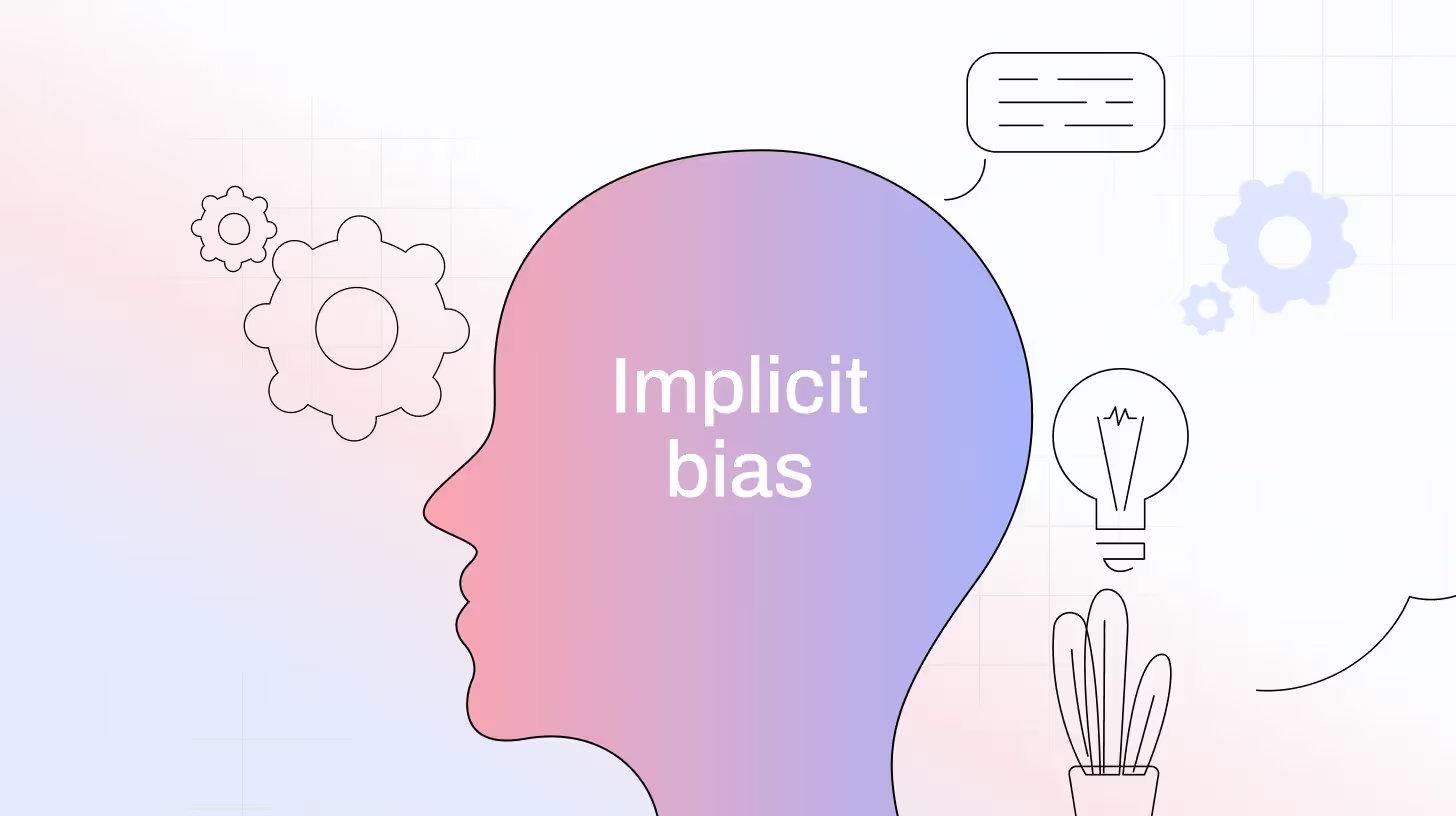 Blog
Blog Understanding and Measuring Customer Experience ROI
Understanding and Measuring Customer Experience ROIUnderstanding and Measuring Customer Experience ROI

Business leaders generally recognize that delivering an excellent customer experience (CX) strengthens loyalty and accelerates growth. However, transforming that understanding into measurable financial outcomes is a complex challenge.
This article explores how to calculate customer experience ROI, its overall impact on business performance, and the common obstacles organizations face along the way. You’ll also learn why CX initiatives are essential to sustainable business growth and how to track and prove CX ROI effectively.
What Is Customer Experience ROI?
To grasp the concept, we must first look at two separate ideas — ROI and Customer Experience.
ROI (Return on Investment) is a metric that assesses profitability by measuring the monetary value of an investment. The formula is straightforward:
ROI = (Gain from Investment – Cost of Investment) / Cost of Investment × 100
Customer Experience (CX), on the other hand, is a measurement of how customers feel about your brand at every stage of their customer journey.
So, when we talk about Customer Experience ROI, we’re asking: For every dollar invested in improving CX, how much measurable value, revenue, retention, or loyalty does the business actually gain?
But here’s where many teams go wrong: they try to measure CX ROI as a single, broad concept. In reality, ROI should be tied to specific actions or initiatives, not an entire CX philosophy.
Instead of asking, “What’s the ROI of CX overall?”, the better question is: “What is the ROI of a particular initiative, such as improving response time or redesigning the onboarding process?” True value comes from measurable change, not just from the intent to improve.
Understanding CXROI is a leadership advantage. When done right, it helps organizations:
- To justify investments in customer-facing technology, training, and process improvements with hard financial data.
- It identifies which initiatives create the greatest value and allocates resources more efficiently.
- Helps strengthen collaboration between departments such as Marketing, Product, and Customer Success by aligning everyone toward measurable business outcomes.
- It demonstrates accountability to leadership by showing how CX directly contributes to revenue growth and operational success.
The Business Case for CX ROI
The numbers make a convincing case.
- Forrester reports indicate that companies leading in Customer Experience (CX) grow revenue. Souce
- According to PwC, 73% of consumers consider experience one of the top three factors in their buying decisions. Source
- And research from Temkin Group shows that even small CX improvements can yield hundreds of millions in added revenue over a few years for enterprise organizations. Source
Businesses that tie experience improvements to ROI don’t just keep customers happy; they build long-term competitive advantage.
Also Read: Customer Experience Survey: Elevate Your CX Game with Smart Strategies
How to calculate customer experience ROI?
Calculating Customer Experience (CX) ROI seems very tricky since it’s attached to both tangible metrics ( like revenue) and intangible metrics (like brand loyalty). We have broken down the whole process into steps to make it simple for you.
Step 1: Calculate Your Total CX Investment
Before calculating ROI, define all your CX investments. That number will form your baseline for measurement. Include all the costs, such as:
Technology: CRM, chatbots, AI tools, analytics platforms.
Training: Customer service, sales, and support team training.
Personnel: Salaries for CX managers, support staff, and analysts.
Marketing & Engagement campaigns: Loyalty programs, surveys, and customer communication.
Operational costs: System integration, consulting fees, and maintenance.
Imagine your company implemented a new AI-powered support system. Over a year, the costs are:
Step 2: Identify Measurable CX Outcomes
Once you know your total CX investment, the next step is to determine what outcomes your CX initiatives aim to achieve. These outcomes should be measurable so you can quantify their impact on revenue, loyalty, and customer satisfaction. Key metrics to consider include:
- Customer Lifetime Value (CLV): Measures the total revenue a customer generates over their relationship with your company. A higher CLV indicates stronger loyalty and repeat business, showing the long-term impact of positive CX efforts.
- Customer Effort Score (CES): Captures how easy it is for customers to interact with your business. Lower effort translates to higher satisfaction and retention, reflecting a seamless experience.
- Churn Rate: Tracks the percentage of customers who leave or stop engaging over a specific period. A lower churn rate indicates effective CX strategies and long-term revenue stability.
- Support Costs: Measures the cost of resolving customer inquiries or issues. CX improvements, such as self-service options and proactive support, can reduce these costs.
- Average Transaction Size (ATS): Calculates the average amount spent per transaction. Improved CX encourages upsells, cross-sells, and higher-value purchases.
- Customer Satisfaction (CSAT): Evaluates how happy customers are after a specific interaction. High CSAT scores point to successful CX initiatives, while low scores highlight areas for improvement.
- Net Promoter Score (NPS): Gauges customer loyalty by asking how likely customers are to recommend your brand. A higher NPS indicates stronger advocacy, increased referrals, and reduced acquisition costs.
By focusing on these measurable outcomes, you can link CX efforts directly to financial results and calculate ROI more accurately. These metrics also allow you to track progress over time and make data-driven decisions about where to invest in CX improvements next.
Also read: Top 15 User Satisfaction Metrics to Improve Customer Experience

Step 3: Quantify the Benefits
Translate the outcomes into monetary terms. This is where you put hard numbers on your CX improvements.
Example:
- Reduced churn:
- Previous churn: 10%
- New churn after CX improvements: 7%
- Each customer value: $1,000
- Total customers: 10,000
- Savings: (10% - 7%) × 10,000 × $1,000 = $300,000
- Revenue from increased loyalty & referrals: $500,000
- Operational savings: Improved automation saves $100,000
Total CX Benefits: $300,000 + $500,000 + $100,000 = $900,000
Step 4: Calculate CX ROI
Now we use the standard ROI formula:

Example Calculation:
- Total Benefits = $900,000
- Total Investment = $900,000

In this scenario, your CX program breaks even in the first year, but don’t worry—CX benefits often compound over time, especially with improved loyalty and referrals.
Year 2 Projection:
- Retention improves further, adding $400,000
- Operational savings increase by $50,000
- Total Benefits: $900,000 + $450,000 = $1,350,000

Now the CX investment clearly delivers positive ROI.
Step 5: Include Intangible Benefits
Not every benefit from customer experience can be measured in dollars, but that doesn’t make them any less important. These intangible gains are often the ones that drive long-term growth:
- Brand loyalty & advocacy: Satisfied customers often become your biggest promoters, recommending your brand to others.
- Employee satisfaction: Happy customers make for happier employees, boosting morale and productivity.
- Competitive advantage: Exceptional CX helps you stand out in crowded markets.
- Customer trust: Delivering consistent, positive experiences strengthens credibility and long-term relationships.
Even though these benefits may not fit neatly into an ROI formula, they should be included in your qualitative assessment of CX impact.
Step 6: Avoid Common Pitfalls
When measuring CX ROI, it’s easy to fall into traps. Watch out for these common mistakes:
- Focusing only on short-term gains: Many CX improvements take months to show measurable financial results.
- Ignoring indirect benefits: Referrals, positive reviews, and word-of-mouth can have a big impact on revenue, even if they’re harder to track.
- Attributing all revenue growth to CX: Remember that marketing campaigns, seasonality, and other external factors also affect results.
Step 7: Continuous Tracking
CX ROI isn’t a one-time calculation; it’s an ongoing process. Regularly track your KPIs, update your investment data, and adjust programs based on performance. Continuous monitoring helps you identify which initiatives deliver the most value and ensures you’re optimizing your CX efforts over time.
Common Mistakes in Measuring CX ROI
Even with clear methods, many organizations struggle to quantify CX success accurately. The following pitfalls are among the most frequent:
Focusing Only on Short-Term Metrics: Customer experience improvements often deliver results gradually. Limiting evaluation to quarterly revenue can overlook long-term loyalty and retention benefits.
Neglecting Customer Feedback: Gathering input without acting on it wastes valuable insight. Regularly review customer comments, surveys, and service data and make adjustments based on recurring patterns.
Chasing Vanity Metrics: Social engagement or online impressions may look impressive, but don’t necessarily reflect profit or loyalty. Focus on metrics that tie directly to outcomes, such as retention rate, CLV, and repeat purchase frequency.
Measuring Isolated Interactions: CX is the sum of many touchpoints. Improving one area while ignoring others (e.g., fast support but poor mobile UX) can limit the overall impact. Track the entire customer journey instead.
Weak Connection Between CX and Business Results: CX teams often fail to link their initiatives to measurable outcomes like revenue or cost savings. Strengthen data integration across departments to prove clear cause-and-effect relationships.
Overlooking Employee Experience (EX): Frontline employees shape customer experiences every day. Empowered, satisfied teams deliver better service, while disengaged ones undermine CX efforts. Treat EX and CX as interdependent.
Reducing ROI to a Purely Financial Equation: ROI isn’t just revenue minus cost. It also includes intangible benefits, trust, advocacy, and emotional loyalty that translate into long-term value. Combine quantitative and qualitative data for a full picture.
Turn Customer Feedback into Measurable ROI with TheySaid
Understanding customer experience ROI is only half the battle; acting on it is where real growth happens.
TheySaid, the everything app for feedback, helps business leaders capture, analyze, and act on real customer conversations at scale. With AI-powered interviews, instant summaries, and actionable insights, TheySaid makes it easy to link customer sentiment directly to revenue impact.















.svg)